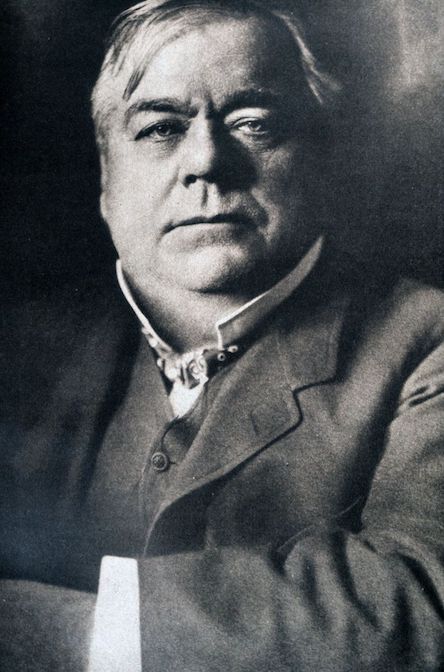
Legendary KC Star racist William Rockhill Nelson: Time to rename Rockhill Road and the Nelson-Atkins Museum?
Flashback, anyone?
Three years back KCC scribe Dwight Sutherland saddled up to put former Star staffer Steve Kraske in his place for suggesting Kansas City take Country Club Plaza developer J.C. Nichols name off the iconic fountain just east of the Plaza.
Well, what goes around comes around, right?
In the interest of breathing a less breathless opinion into the mix, I’m reposting Sutherland’s screed.
And leave us not repeat the mistake of renaming the Paseo sans a public vote.
So here we go…
Sutherland: The Hypocrisy of Steve Kraske & The Kansas City Star
In fact, the surest way to establish one’s street cred with other members of the liberal/left is to attack the legitimacy of our country’s traditions and institutions.
This started well over 100 years ago, with the publication in 1913 of Charles Beard’s “An Economic Interpretation of the Constitution of the United States.”
According to Professor Beard, our constitution was the result of a secret plan by a well born elite to protect its power and wealth, particularly the wealth embodied in chattel slavery.
Like most leftist critiques, its value was that it discredited the very founding of the country. The American project was immoral “ab initio,” i.e. it was illegitimate from the first act. More recently, this argument has been expanded to include not just the founders, but the discoverer of America.
For at the last 30 years, history textbooks have depicted Christopher Columbus as a genocidal monster. Is it any wonder the local newspaper reported the vandalizing of his statue in various cities across the country?
Two months ago the Kansas City Star ran an opinion piece by freelance opinion columnist Steve Kraske reflecting an application of this mentality to local history.
Kraske’s June 16th piece demonstrated that the national mania for erasing the historical monuments to people who do not meet current standards of political correctness had reached Kansas City (“Everything’s up to date . . . etc.”)
Kraske argued that the J.C. Nichols Fountain on the Country Club Plaza should be renamed. He reasoned that the eponymous Jesse Clyde Nichols showed himself as a vicious racist by using racially restrictive covenants in deeds conveying ownership of homes in J.C. Nichols Company developments.
While Kraske conceded that most other developers at the time used similar exclusionary language, he said Nichols’ use was particularly effective and he should bear a large share of the blame for the resulting racial segregation in Kansas City.
This of course justified taking Nichol’s name off one if our city’s most iconic landmarks. (Which Nichols paid for, by the way!)
There are so many arguments against this position it’s hard to know where to begin.
Consider the following item from the Star in 1913.
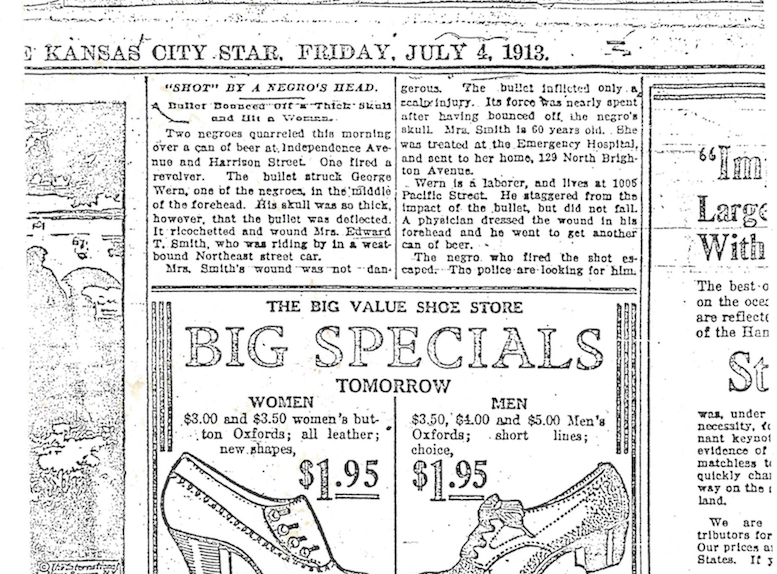 First of all, it’s not fair to judge people who lived 100 years ago by whether their attitudes and practices are now deemed acceptable by 21st century standards. Secondly, Kansas City had existed as a segregated city for 50 years before J.C. Nichols went into business as a builder. It has continued as a segregated city for 67 years after his death in 1950.
First of all, it’s not fair to judge people who lived 100 years ago by whether their attitudes and practices are now deemed acceptable by 21st century standards. Secondly, Kansas City had existed as a segregated city for 50 years before J.C. Nichols went into business as a builder. It has continued as a segregated city for 67 years after his death in 1950.
Clearly, some larger social forces were at work, larger than the influence of any single Kansas City businessman, no matter how powerful he was during his lifetime.
Thirdly, the covenants like those barring home buyers in Nichols’s developments from reselling to certain minorities were held to be unconstitutional in 1948 by the U.S. Supreme Court. Persistent residential segregation must have some other cause than the use of such covenants if it is still so prevalent almost 70 years later.
What makes Kraske’s position on this issue particularly offensive is its breathtaking hypocrisy.
The Star’s own record on coverage of the African-American community was one of condescension at best. More typically it was one of derision and contempt for much of the newspaper’s history.
Consider the words of Henry Schott, a senior editor of the Star. In 1904, he gave an interview in which he happily described how the slums which had formerly surrounded downtown had been cleared and its inhabitants forced to relocate.
“Only yesterday the corridor between Independence Avenue and 12th Street had been ‘covered largely with cabins occupied by Negroes! Now,’ Schott gushed, ‘the shacks had given way to fountains and gardens. . . . The pickannanies have disappeared with their homes and apartment houses of the best type have come to the Paseo.”
Boss Busters & Sin Hounds, Kansas City and its Star, by Henry Haskell, University of Missouri Press (2007).
During that same era, Haskell’s authorized history of the Star describes how the newspaper had campaigned against the traction (i.e. street railroad) monopoly’s bid to get a long term franchise on all trolleys in Kansas City. In a battle between “reformers,” led by the Star, and the trolley interests, he said the Star published “a series of blatantly racist stories accusing the Corrigan interests of crudely attempting to buy the black vote.” Ibid, p. 148
Nor was this naked racial prejudice confined to rank and file Star employees.
In fact, it was a top down attitude coming from our own bush league Citizen Kane, William Rockhill Nelson. Nelson shared with J.C. Nichols, his protégé, an approach to city planning which aimed at segregating Kansas City by race and class.
According to Haskell, in what is otherwise a very positive depiction of the newspaper; “(s)egregation of races, like segregation of economic classes, was both a fact of life and an essential means of defusing ‘sectarian conflict’ in the eyes of “Nelson, Nichols and many other civil leaders.”
Far from being a critic of J.C. Nichols and his reactionary ways, Nelson as the Star’s proprietor was the young developer’s mentor and ally. The two worked in tandem to develop the Rockhill neighborhood around Nelson’s Oak Hall estate. Together they pushed for a parks and boulevard system which, Haskell conceded, had “the tendency to ghettoize African-Americans on the city’s east side.”
So close was this dynamic duo that the Star’s publisher named the real estate developer to be one of just three trustees for his Nelson Trust, charged with deciding what would happen to the Kansas City Star after his death. (One of J.C.’s fellow trustees was William Volker, a Scrooge-like employer like Nelson, known for using a stop watch to time his factory workers’ performing their jobs, in order to force production line speed-ups.)
I’m waiting for Kraske to call for the renaming of Volker Park.
Ultimately, Nichols and his fellow trustees sold the paper to a buyout group of Star executives. However, the Star’s problematic attitude towards racial issues continued long after W.R. Nelson’s death.
In 1928, when the Republican National Convention was held here, for example, the Star celebrated that occasion like any other Chamber of Commerce civic booster. Its writers conveniently overlooked the fact that black delegates to the convention had to make arrangements to stay in private homes because the hotels here wouldn’t have them.
Throughout my own youth -well into the 1960’s- the Star ran classified ads based on race, e.g. “Help wanted-men-colored.” This mirrored the paper’s own Jim Crow labor practices, with black workers relegated to manual labor while management positions were reserved for whites.
And as recently as 15 years ago, Star columnist Mike Hendricks was making not-so-sly racial innuendoes in his column.
He suggested that Mission Hills needed to install basketball courts in one of its city parks. Hendricks knew full well that this was short hand for attracting numbers of young African-American men to an otherwise white neighborhood.
This was a controversy at that time because that very thing had just happened in Prairie Village. When I encountered Hendricks at a public event soon afterward, I asked him when we could expect to see him picnicking with his family at that local park in my fair city. He became very embarrassed.
It’s easy to taunt people in print, not so easy to face them in person.
The opinion piece by Kraske is a contemporary version of the ancient practice of “damnatio memoriae,” a Latin phrase meaning that a person’s memory must be erased, so heinous were their crimes.
In an op-ed piece from 2011 in the New York Times, the author, a lecturer at the University of North Carolina (one of the epicenters of the current controversy) discussed this custom. In describing the campaign in Egypt at the time to remove all traces of the reign of the just fallen dictator Hosni Mubarak, Sarah Bond said the following:
“Perhaps it is best that the people of Egypt be spared this forced amnesia and be allowed to retain some memories of their former president.
Erasing the crimes of the past doesn’t help us avoid them in the future.
Instead of establishing a clear precedent, it may well serve to perpetuate the misdeeds of the past.”
Kraske’s call for erasing such an important chapter in Kansas City’s history is equally misplaced.
Especially given his employer’s own sketchy history of patronizing the black community here, Kraske lacks the moral standing to attack anyone else for racism. In fact, if he followed the logic of his own argument the Nelson Gallery would have to be renamed and all traces of William Rockhill Nelson’s heritage obliterated, starting with the long overdue euthanasia (“the act of killing the hopelessly sick for reasons of mercy”) of the Kansas City Star.



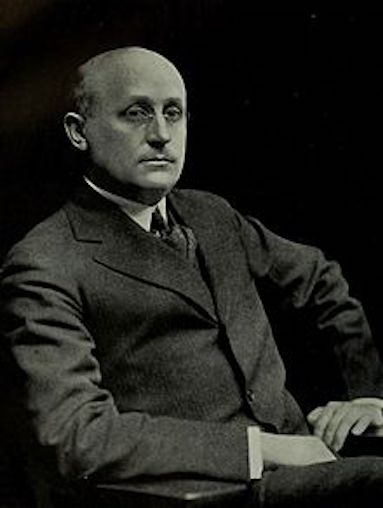



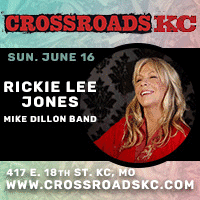

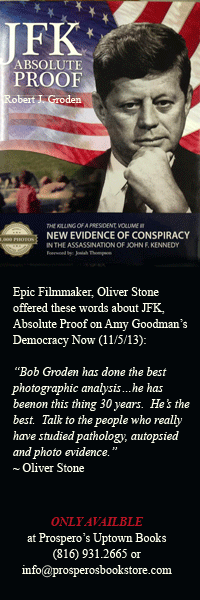

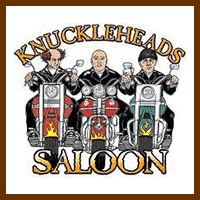

Not that long ago all of johnson county kansas was an Indian Reservation. Do the elite liberals also want to give the county land back to the Indians.
Also, johnson county kansas is named after Rev Thomas Johnson who was a Methodist minister and a SLAVE OWNER.
When will kansas give johnson county back to the Indians or will the county change their name.
Hypocrisy abounds in liberalism.
Very good points
I am not optimistic that our liberal KC Mayor, nor our liberal Jackson County Executive will listen to reasonable concerns from people who favor leaving the name of the J. C. Nichols Fountain as is. Our KC Mayor is not perfect, nor is our Jackson County Executive. So why do they expect that every thing Jessie Clyde Nichols did is right? The Country Club Plaza, and the 18th and Vine Jazz District (even with it’s current problems) are about the only thing that draws tourism to our City. Do we want to give up those attractions. The story of J. C. Nichols and all that he did for our City is a story to be told to our tourists, proudly. And it’s what will keep tourists coming here.
Long timen listener first time caller! It is to funny that I saw Steve Kraske for the first time on the 4th of July weekend on a KC PBS half hour show. Then in this article … he was giving props to Black Lives Matter a Marxist group! I messaged him on Facebook. All of the panelists agreed with each other for a brilliant slinging of ideas! Not! My question today is what was Jesse Clyde Nichols political affiliation? Anyone know? I did a search found nothing! Maybe someone has a source I could read.
Thanks,
First time caller
Good question – I guess – does it really much matter though?
I can’t tell you since he died seventy years ago. I imagine he was like most KC business moguls, a conservative Democrat when he was at work in Missouri,a moderate Republican when he was at home in Kansas. I have been told the J.C. Nichols company ran the Johnson County Republican Party for many years. I believe it because my senior partner was chairman! My late father used to do a very moving imitation of Miller Nichols,J.C.’son,as the puppet master,pulling the strings of the G.O.P. Chair as Pinocchio,or Edgar Bergen moving Charlie McCarthy’s mouth as ventriloquist,if you prefer another metaphor.Is this a great country or what?